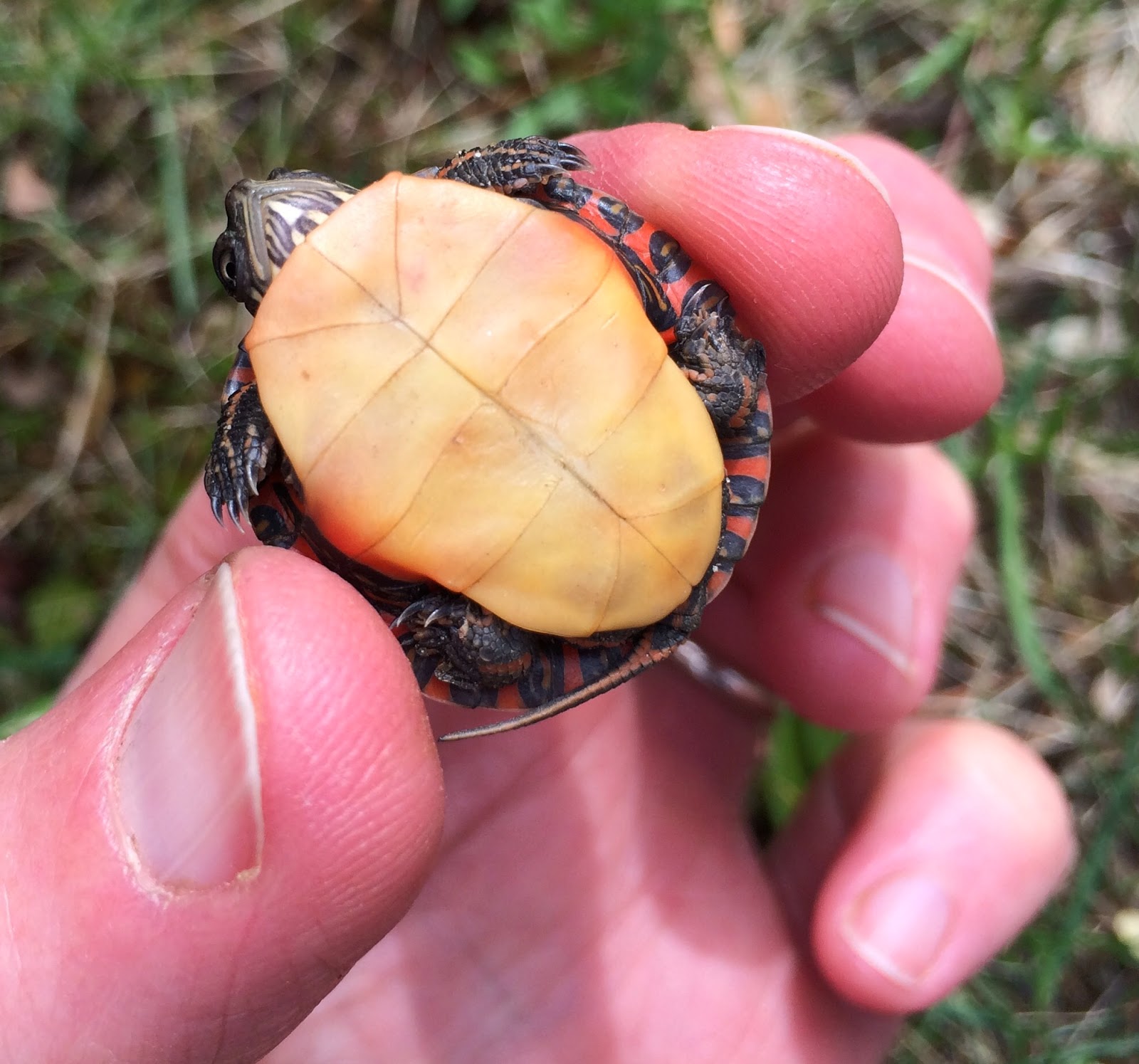Early last week Kodi started sniffing the air in the backyard. More than usual. We thought it was our compost bin or a neighbor's barbecue. Then a few days back he wandered into the woods behind our brush pile. When I went looking for him I found him near a large pile of turkey feathers. This is what he had been smelling--a dead turkey.
More feathers were strewn farther along in the woods--
patterned wing feathers and iridescent breast feathers.
Several clues identified the turkey as an adult male:
Rounded or worn tips to the wing feathers, with white all the way to the tips, indicate an adult turkey
(young turkeys have pointed wing tips and no white near the tips)
And it was a male--a long hair-like cluster of modified feathers (called mesofiloplumes), "the beard" was lying in the pile of feathers. Males grow a longer beard from their chest as they age--and this was a long beard. Young males are beardless and females rarely grow them.A few other male clues: a partial leg with a spur (sorry if this starts to get a little grim); males use these to spar with other males, and black-tipped breast feathers (females have buffed tipped feathers).
Kodi discovered some of the bones nearby resting next to a large canine scat (I'll spare you the photographic details). I'm assuming this was a coyote-killed turkey. The tom turkey clearly did not make it to his night tree roost in time or he got up too early.
We were not surprised at this outcome however. One of our neighbors started feeding turkeys and deer this past winter. Two flocks of 6-7 male and female turkeys and 5-6 deer visited daily. Unfortunately feeding them only concentrates the turkeys such that predators can more easily find them. I don't mind that a coyote killed a turkey--they are part of our local food web--but would rather our neighbors not feed the prey. And for deer, their stomachs are not designed to eat corn and other grains in winter. Plus the deer have demolished everyone's arborvitae.
This was likely the male turkey that was displaying in our backyard a month ago. His small harem of females are probably on nests. They are secretive now, and next year a different male will come courting.



































